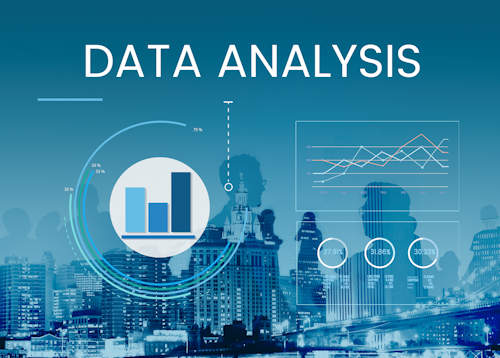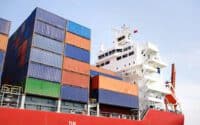The Future of Demand Forecasting

In an increasingly interconnected world, the cargo shipping industry stands as a testament to globalization. From the electronics that power our daily lives to the food we eat, a significant proportion of goods have traveled the seas before reaching our hands. This industry is responsible for approximately 80% of global trade by volume and over 70% by value, underscoring its pivotal role in shaping economies and sustaining our modern lifestyles.
* Please send feedback/suggestions to editor @ shipuniverse.com
The Challenge of Unpredictability in Shipping Demands: Yet, for all its significance, cargo shipping faces a major hurdle: unpredictability. Variations in demand can arise from numerous sources, whether they be economic fluctuations, geopolitical events, or even natural disasters. Such unpredictability poses challenges in efficiently allocating resources, optimizing shipping routes, and ensuring timely deliveries.
Introduction to Demand Forecasting and Its Rising Importance: To navigate these uncertainties, the industry is increasingly turning to demand forecasting. At its core, demand forecasting is the practice of predicting future shipping needs based on various data points. In an era where margins matter and efficiency is paramount, accurate demand forecasting is becoming the lighthouse guiding ships through the tumultuous waters of global trade.
Traditional Methods
Before the age of computers and data analytics, the shipping industry had to rely on more rudimentary methods to estimate demand.
A Glance at How Shipping Demand Was Traditionally Estimated: Historically, shipping companies relied heavily on manual record-keeping, past experiences, and often, intuition. Brokers, ship owners, and operators would primarily base their decisions on historical data, market trends, and personal industry insights. Charts, ledgers, and face-to-face negotiations were the tools of the trade.
The Limitations and Challenges of Historical Methods: These traditional methods, while valuable in their time, came with inherent limitations. Human error, biases in judgment, and the sheer inability to process vast amounts of data rendered these methods susceptible to inaccuracies. Additionally, they lacked the ability to adapt quickly to unforeseen global events, leading to over- or underestimations that could prove costly. As the volume and velocity of global trade increased, it became evident that these methods were no longer sustainable or efficient, paving the way for more advanced forecasting techniques.
The Need for Advanced Demand Forecasting
The cargo shipping industry serves as the backbone of global trade, and its efficiency directly impacts economies worldwide. With the inherent unpredictability of demand patterns, accurate forecasting becomes indispensable. Here’s why:
Economic Implications of Inaccurate Forecasts: Overcapacity and undercapacity are both consequential outcomes of imprecise forecasting. Overcapacity means ships are sailing without being fully loaded, leading to operational inefficiencies and increased costs per shipped item. On the other hand, undercapacity can result in missed business opportunities and strained customer relationships. Both scenarios can result in significant financial losses and hinder the competitive edge of a shipping company.
Environmental and Operational Benefits of Precise Demand Forecasting: Beyond the economic perspective, accurate demand forecasting has far-reaching environmental benefits. Ships optimized for cargo load can sail more efficiently, consuming less fuel and thereby reducing greenhouse gas emissions. Operationally, precise demand predictions mean ports can be better prepared, minimizing cargo wait times and streamlining the entire shipping process from dock to destination.
AI and Machine Learning in Demand Forecasting
The realm of Artificial Intelligence (AI) and Machine Learning (ML) has progressed remarkably over the past decade, offering solutions to challenges that were previously insurmountable.
Introduction to AI and Machine Learning Techniques: At the heart of AI lies the ability for machines to mimic cognitive functions such as “learning” and “problem-solving”. Machine Learning, a subset of AI, is particularly significant in the context of demand forecasting. ML involves training algorithms on large datasets, enabling them to recognize patterns and make predictions based on new data.
How These Technologies Process Vast Amounts of Data: Traditional methods of analysis often falter when faced with the massive amounts of data generated by the cargo shipping industry. However, AI and ML thrive on this magnitude. They utilize advanced algorithms to sift through terabytes of data, extracting relevant insights at a speed that’s incomprehensible for human analysts. From historical shipping records to real-time port activities, these systems integrate various data points to forecast future demand patterns.
The Advantages They Offer Over Traditional Methods: AI-powered demand forecasting brings about a level of precision that’s unattainable with conventional techniques. Firstly, the ability to process and analyze vast data sources provides a comprehensive view of demand influencers. Secondly, machine learning models continuously learn and adapt, refining their predictions over time. This means that, as the global trade landscape evolves, so does the AI’s understanding of it. The outcome? More accurate forecasts, reduced operational costs, and a stronger competitive stance in the market.
Key Data Points Considered in AI-Powered Forecasting
Navigating the vast ocean of data to optimize the cargo shipping industry requires pinpointing specific data anchors. Artificial Intelligence thrives on information, and the richer and more varied the data, the more insightful its predictions. Here are the critical data points leveraged by AI in reshaping the demand forecasting landscape:
Trade Flow Data and Economic Indicators: Understanding trade flows – which commodities are being shipped, from where, and to where – is foundational. AI integrates this with global economic indicators like GDP growth rates, consumer demand metrics, and manufacturing outputs. Such comprehensive data synthesis gives AI a clear picture of both the current state of trade and potential future trends.
Seasonal Patterns and Historical Shipping Data: Much like other industries, cargo shipping has its peaks and troughs. Seasonal shifts, often driven by holidays, agricultural cycles, or cultural events, significantly influence shipping demands. By analyzing historical shipping records, AI can discern repetitive patterns, predict seasonal surges or declines, and allow companies to plan accordingly.
External Factors: Political Events, Trade Wars, and Global Economic Conditions: The global nature of the shipping industry means it’s profoundly affected by international events. Political unrest, trade embargos, or even shifts in diplomatic relations can alter shipping routes and demands overnight. AI systems stay attuned to such macro-level changes, adjusting forecasts based on geopolitical climates and global economic health.
Real-time Data: Port Activities, Weather Conditions, and Global Shipping Rates: The dynamic nature of the shipping industry means that conditions change rapidly. Ports can become congested, weather conditions can delay shipments, and fluctuating fuel prices can influence shipping rates. AI harnesses real-time data feeds, integrating instant updates on these factors into its predictive models. This ensures that forecasts are not just based on historical and static data but are continually refined with up-to-the-minute information.

Do you have a Maritime Product or Service that may be of interest to Shipowners? Tell us about it here!
Do you have feedback or insights? Please reach out to editor @ shipuniverse.com



